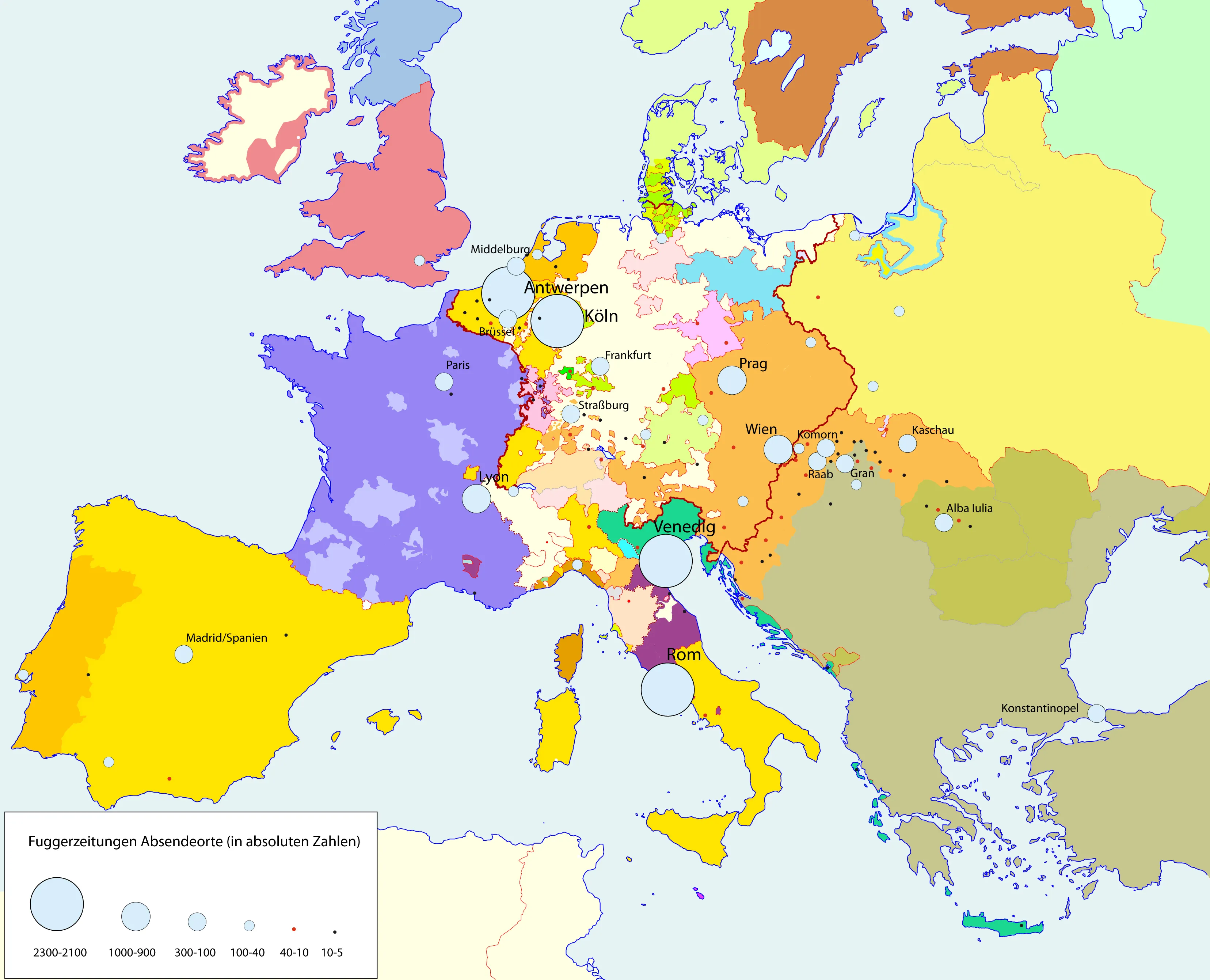
The Fuggerzeitungen. An early modern informative medium and its indexing
- Hosting organisations
- Uni Wien - Institut für Österreichische Geschichtsforschung
- Responsible persons
- Dr. Katrin Keller
- Start
- End
To this day, newspapers are an integral part of our daily lives and our media landscape, although electronic media as well as social media have been changing communication and the exchange of information fundamentally in the past years. But since when have periodically published news media like newspapers even existed, and how did they originate? Until now, the emergence of a periodic press in Europe is commonly linked to the year 1605, when the first printed weekly newspaper appeared in Strasbourg. The recently completed project presented herein, however, dealt with the decades immediately before that date – during which social elites were informed about current events through handwritten newspapers. The fact that this handwritten medium played a substantial role in the development of the modern press has hitherto been addressed in research only rarely and in very general terms.
The central point of departure for this project was one of the most prominent collections of such handwritten newspapers in the German-speaking world: the so-called “Fuggerzeitungen” or Fugger newspapers. This collection, part of the imperial library in Vienna since the 17th century, includes more than 15,000 newspapers in German and Italian from the years 1568 to 1604, thereby documenting precisely the time prior to the appearance of printed newspapers. With the 27 volumes resulting from the collection activities by the brothers Octavian Secundus and Philipp Eduard Fugger in Augsburg, such a corpus has now been completely digitized and made accessible for the first time: A database allows the newspapers to be searched by persons, places and dates; maps provide new approaches to the information network and the transmission of news throughout Europe and the entire world known at the time. Researchers and interested laypersons alike now have worldwide access to the collection, thereby allowing its use as a source as well as for academic teaching purposes. Simultaneously, the project focused on the historic contextualization of the collection hitherto generally viewed as an exception or unique specimen. To this end, further newspaper collections in the German-speaking area and in Italy were sought out; these were then compared to the Fugger newspapers and the corpora examined for connections. From this resulted new findings regarding the processes of news transfer within Europe as well as the embedding of the handwritten newspaper within the early modern media landscape of handwritten and printed texts along with orally transmitted informations. New insights were also gained on the relevance of such newspapers for the practice of regular media consumption and the specificity of the medium in the transfer between Italy and the Holy Roman Empire, as well as on the differing information cultures north and south of the Alps. In light of these results, the year 1605 as the “birthdate” of the European press may well be put up for further discussion.